New SLF Quarantine Issued for VA
Virginia is for lovers? Well, looks like the spotted lanternflies (SLF) also find the state super-attractive.
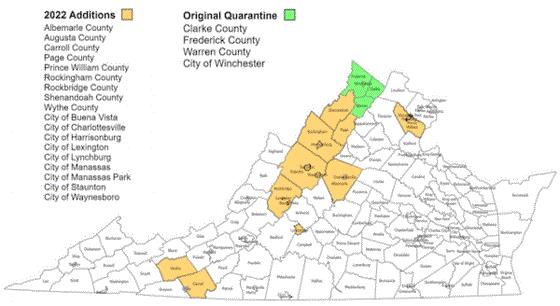
Spotted lanternfly quarantine has been expanded in Virginia. The original quarantine area included the counties of Clarke, Frederick and Warren, and the city of Winchester. The Virginia Department of Agriculture and Consumer Services (VDACS) announced on July 8 that quarantine has been imposed on the counties of Albemarle, Augusta, Carroll, Page, Prince William, Rockingham, Rockbridge, Shenandoah and Wythe, and the cities of Buena Vista, Charlottesville, Harrisonburg, Lexington, Lynchburg, Manassas, Manassas Park, Staunton and Waynesboro.
VDACS and USDA-APHIS will work together on quarantine and regulatory procedures, as well as treatment in some areas. Under the quarantine protocol, businesses will be subjected to permitting and inspection requirements when transporting regulated items. These regulated items include the insects themselves and of any life stage (of course, but who would do that?), nursery stock, garden plants, lumber, outdoor equipment, shipping containers and many more.
To find more information about SLF quarantine in Virginia, visit the VDACS website by clicking HERE.

IR-4 Releases Beetle, Grub & Borer Efficacy Summary
IR-4 Environmental Horticulture Program released its beetles, borers and white grub research summaries at the end of June. This document summarizes research that had been performed by IR-4 and its collaborating researchers since 2005, and includes data on the efficacy of 58 different active ingredients against leaf-feeding beetles, soil-dwelling grubs, and beetle and clearwing borers.
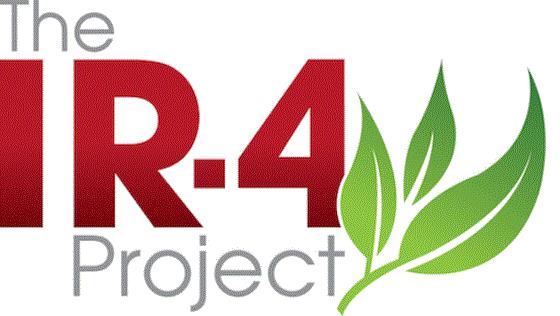
Putting groups with disparate habitats and feeding habits together in the same document can make it rather difficult to digest. I think what I’ll do is to cut them into smaller, digestible chunks in this newsletter. You can access the entire document by clicking HERE.
One feedback, or rather, question I often receive from y’all after introducing one of these research summaries is, “Wait, what about the efficacy of X? I love that stuff!” Now, listen, IR-4 can’t test for everything under the sun. It can only work with products that manufacturers are willing or wanting to test, and that list may not include your favorite products. Don’t get upset if you don’t see your favorite products in this newsletter or in the summary document.
You can propose testing of your favorite products to IR-4 at any time by filing a request to study by clicking HERE. If you have research data about your favorite products and are willing to share with me, I’ll take a look at the data and put them in this newsletter if the research is done right.

Efficacy Against Leaf-feeding Beetles
First, let’s take a look at the foliage-feeding beetles. Six species had been evaluated—black vine weevil (adult), European elm flea weevil, Japanese beetle (adult), redheaded flea beetle, Sri Lankan weevil and viburnum leaf beetle. (Only one or two studies had been performed on adult black vine weevil, European elm flea weevil and Sri Lankan weevil, so I’m just going to skip these species.)
Fifteen studies evaluated the efficacy against adult Japanese beetles between 2007 and 2021. Products (active ingredients) that demonstrated at least 85% reduction in beetle survival or foliage damage in at least two studies include Acelepryn (chloratraniliprole), Aloft (clothianidin + bifenthrin), Onyx (bifenthrin), Sarisa (cyclaniliprole), Scimitar (lambda-cyhalothrin), Sevin (carbaryl), Talstar (bifenthrin) and TriStar (acetamiprid).
Just about all of these studies against Japanese beetles looked at the efficacy of foliar spray. What about soil drench against Japanese beetles on your favorite rose bushes? Well, you’ll have to wait until the next issue of this newsletter where I’ll talk about the topic in a bit more detail.
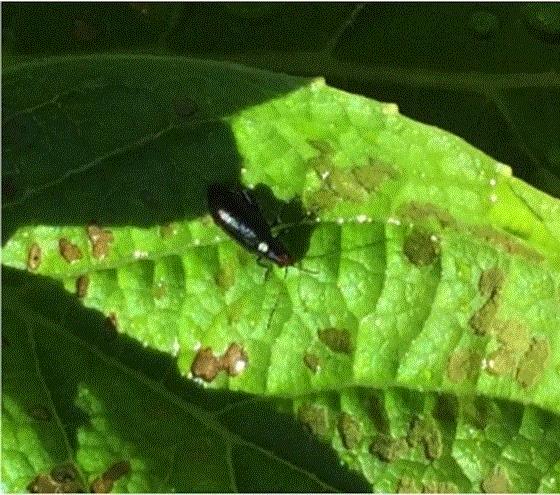
Redheaded flea beetle is a major pest in nurseries.
Five studies looked at the management of viburnum leaf beetle. Different from Japanese beetle and redheaded flea beetle, the life stage of viburnum leaf beetle that damages foliage is the larval stage. It turns out viburnum leaf beetle larvae are pretty easy to control. Most of the products tested, including Acelepryn, Arena (clothianidin), Conserve (spinosad), Flagship (thiamethoxam), Hachi-Hachi (tolfenpyrad), permethrin, Safari (dinotefuran) and TriStar, which significantly reduced larval population.
Fifteen studies were performed between 2012 and 2021 to evaluate product efficacy against redheaded flea beetles. These trials were conducted mainly to evaluate the ability of the tested products in reducing the number of beetles or the severity of foliar damage.
The data included in the summary basically match my experience working with this beast—the results can be all over the place. In addition to pyrethroids (such as Onyx and Scimitar), Aloft, Sarisa and TriStar were identified as the products that provided the most consistent performance against adult redheaded flea beetles. Other notable products include Acelepryn, Discus (imidacloprid + bifenthrin), Flagship, Hachi-Hachi, Mainspring and XXpire (sulfoxaflor + spinetoram), which worked well in some studies, but not in others.

Efficacy Against Grubs in Media or Soil
IR-4 evaluated insecticide efficacy against the grubs of five beetle species. These species are black vine weevil, Japanese beetle, May/June beetles (Phyllophaga), oriental beetle and strawberry rootworm. (Japanese beetle, May/June beetles and strawberry rootworm were evaluated in only a couple of studies, so, again, I’m going to skip these species.)
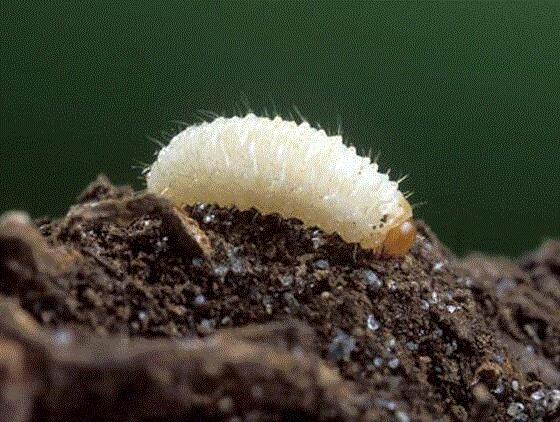
A black vine weevil grub. (Photo credit: Peggy Greb, USDA ARS, bugwood.org.)
For most growers, black vine weevil grubs are more troublesome than the adults. IR-4 conducted nine experiments to evaluate product efficacy against black vine weevil grubs. Drench or media incorporation of Acelepryn, Arena, Flagship, Safari and Talstar provided at least 85% control in at least one of these studies.
I never have to deal with oriental beetle, but it’s a major grub species in the Northeast. Nine studies were conducted between 2005 and 2009 to evaluate efficacy against oriental beetle grubs. Products that achieved more than 85% control when applied as drench or media incorporation in at least two studies are Acelepryn, Flagship, Marathon (imidacloprid) and Safari.
A preventive management program against grubs is more effective than a curative one. That means y’all will need to understand the life history of the beetle species and try to predict when the beetles will lay eggs and when the eggs will hatch. Young grubs are easier to control than older grubs, so preventive treatment should be applied soon after peak adult activities.

Efficacy Against Ambrosia Beetles
Ten studies evaluated insecticide efficacy against two ambrosia beetle species—the granulate ambrosia beetle and the black stem borer. Both are in the genus Xylosandrus.
One word before I start with the discussion of efficacy: it’s critical that you apply an insecticide as preventive treatment before the beetles have bored into the trunks. That’s because the beetles deposit the ambrosia fungi as soon as they bore in. Ambrosia fungus is what’s killing the tree, so the goal of the management should be to prevent boring and depositing of the fungal spores. The keys to successful management of ambrosia beetles are to monitor beetle flight with ethanol-baited traps and make timely treatment to protect the trees from attacks. Click HERE for a previous issue of this newsletter on ambrosia beetle management.
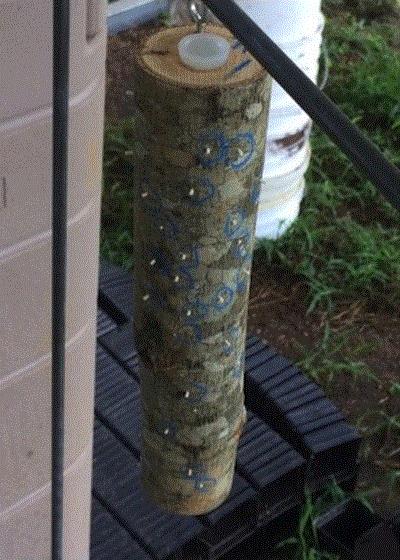
Ambrosia beetle flight and attack activities can be monitored with an ethanol-infused bolt. (Photo credit: Matthew Brown, Tennessee State University, Clemson University.)
On with the summary! Among the 15 or so active ingredients evaluated, only the pyrethroids (permethrin, Onyx, Scimitar and Talstar) had provided consistent prevention of beetle attacks. Other products, both chemical and biological, had failed spectacularly as preventive treatment.
I also did some studies to look at whether media drench or trunk spray with systemic insecticides or fungicides can prevent attacks or rescue trees that were already attacked. The answer is a big, fat NO.

Efficacy Against Flatheaded & Clearwing Borers
IR-4 had evaluated insecticide efficacy against two flatheaded borers (bronze birch borer and flatheaded appletree borer) and two clearwing borer species (banded ash clearwing and greater peachtree borer) in four studies. There ain’t really enough data to draw any kind of conclusion. In lieu of IR-4 data, I'll give y’all my takes on managing these two groups of borers.
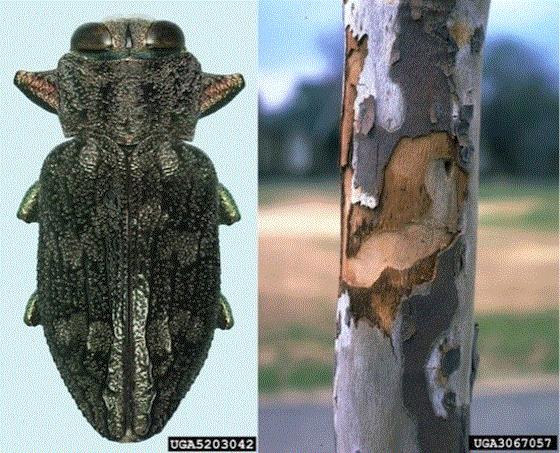
An adult flatheaded appletree borer (left) and larval tunnel of the Pacific flatheaded borer under the bark (right). (Photo credit: Natasha Wright, Braman Termite and Pest Elimination; James Solomon, USDA Forest Service, bugwood.org.)
Currently, my recommendation for flatheaded appletree borer or other species is a preventive one. Soil drench of neonicotinoids, particularly imidacloprid, soon after transplanting is currently the most effective approach in preventing attacks by flatheaded borers. We’re in the process of evaluating other systemic insecticides as a potential replacement for neonicotinoids.
If you prefer to spray, you’ll need to spray the trunks (particularly the lower 3 ft.) just before and during the flight period of adults. The timing of flight can be different from place to place and from year to year, so the best approach is to monitor with purple sticky traps or use a degree-day model. My rule of thumb is about 700-degree days (accumulate from the first of January and use 50F as the base temperature) for the start of the flight period.
For the clearwing borers, drench of neonicotinoids hasn’t provided good control. There's not enough information for me to say whether other systemic insecticides, such as Acelepryn, will provide better results than neonicotinoids. At this time, the best approach may be to spray the trunks of susceptible hosts with pyrethroids and other long residual insecticides when the adults are flying. The good news is species-specific pheromones are available for trapping and monitoring adult clearwing borers. Trunk spray should be made as soon as the clearwing moths are caught in the traps.
I’m participating in two major USDA Specialty Crop Research Initiative grants— one on ambrosia beetles and the other on flatheaded borers. The major goals of these projects are to figure out how to control these borers more effectively and safely. We’re still in the early stages of the projects so there’s not a whole lot to share at this time. Hopefully, I’ll be able to share with y’all some insights from the projects on the best product or approach in monitoring beetle activities, applying management tools and preventing attacks. Stay tuned!



See y'all later!

JC Chong
Professor of Entomology at Clemson University
This e-mail received by 27,289 subscribers like you!
If you're interested in advertising on PestTalks contact Kim Brown ASAP!